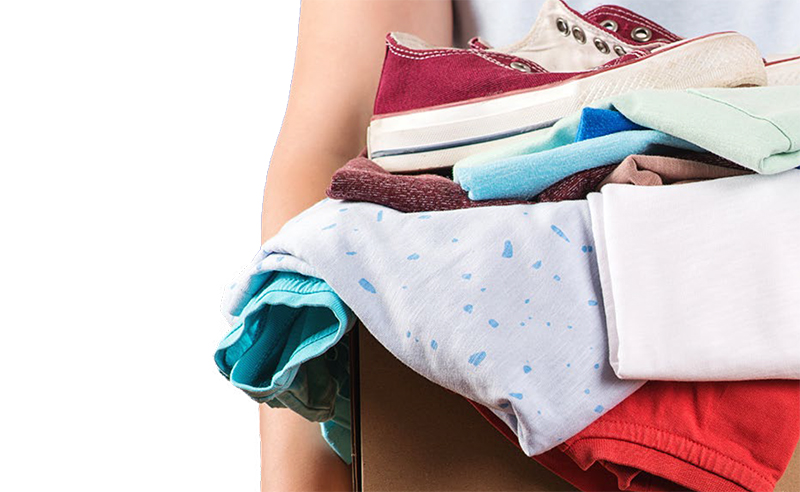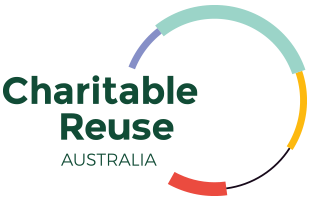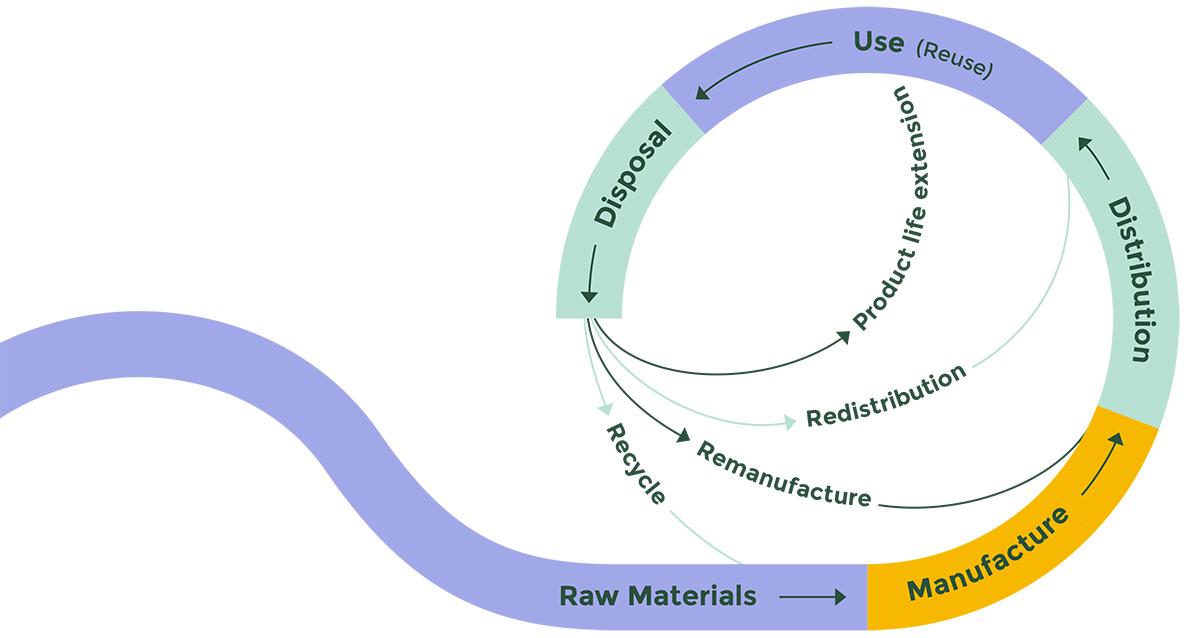When you look at the big picture, charitable reuse and recycling can make a big difference in helping Australia move towards a circular economy. The comparative study we commissioned in this report proves that the sector not only significantly reduces waste but has both social and environmental benefits, too. And, in turn, will help inform our decisions that will benefit people, planet and profit now and in the future.
Australia’s 2030 National Waste targets aim to:
- Reduce total waste generated in Australia by 10% per person.
That’s 300kg per person
- Achieve 80% average resource recovery rate from all waste streams.
The charitable recycling sector is already well ahead of that at 86% recovery rate across the sector, so we’re well poised to help you achieve your goals.
In FY20, charitable recycling helped divert over 1 million tonnes of waste from landfill. That’s around 39kg per person per year.
Annual Donations to Charity Shops
| Donations Processed | Tonnes |
|---|---|
| Total Donations Processed | 1,005,952 |
| Clothing Donations | 310,316 |
| Revenue from Sale of Donations | AUD |
|---|---|
| Total Annual Revenue | $961,000,000 |
| Total Revenue (Clothing) | $527,500,000 |
| Average Consumer | Kilograms |
|---|---|
| Donations Made to Charity Shops per Person | 39 |
| Clothing Donations to Charity Shops per Person | 12 |
| Donated Products Per Capita by State | Kilograms |
|---|---|
| Tasmania | 67 |
| South Australia | 56 |
| Queensland | 55 |
| Victoria | 36 |
| New South Wales | 31 |
| Western Australia | 31 |
| Northern Territory | 31 |
| Australian Capital Territory | 14 |
| National | 39 |
Our infrastructure is enormous:
3,000+
charity and social enterprise retailers
10,000
charity collection bins
5,295
full-time employees
33,500
volunteers
Economic Impact from Clothing – Jobs
| Jobs and Volunteer Positions Created | Jobs |
|---|---|
| Total Jobs Created | 5,295 |
| Jobs Created (Individuals Facing Barriers) | 1,211 |
| Volunteer Positions Created | 33,576 |
| Profile of Charity Shop Employees | Percent |
|---|---|
| Employees with a Disability (601) | 11.3% |
| Employees on Supported Wages (611) | 11.5% |
| Volunteers Moving to Paid Employment | 5.0% |
| Volunteers Under Mutual Obligation* | 17.0% |
| Volunteering Hours | Hours |
|---|---|
| Total Volunteer Hours (annual) | 9.2 Million |
| Average Volunteer Hours (weekly) | 4 |
*Work for the Dole, community service orders
What we collect is re-used through charity and recycled domestically
(Or sent overseas to be reused there).
It’s all part of the circular economy, in which charitable recycling plays a crucial role.
How does this help?
Let’s take textiles as an example. Not only does this re-use reduce pressure on landfills, it also has a far lower environmental impact than new clothes.
86% of what we collect is recovered and reused:
- 16.55% Sold in charity shop
- 36% Repurposed domestically
- 0.5% Provided as welfare
- 33% Exported for reuse overseas
Donations Used (add rounded tonnages)
| Donations Used (Clothing) | Percent | Tonnes |
|---|---|---|
| Sold in Charity Shop | 16.5% | 51,202 |
| Repurposed Domestically | 36% | 111,714 |
| Exported for Reuse in Developing Countries | 33% | 102,404 |
| Provided as Welfare | 0.5% | 1,552 |
| Waste to Landfill | 14.0% | 43,444 |
| Resource Recovery Rate | 86.0% |
- 66% reduction in carbon emissions across the supply chain. GHG Emission savings 888,000 tonnes/yr.
- 59% reduction in global energy use. Energy use saved 1.9 Million MWh/yr.
- 57 % reduction in global water consumption. Water consumption saved 88,000 ML/yr.
Environmental Impact from Clothing
| Greenhouse Gas Emissions Saved (Annual) | Percent |
|---|---|
| 888,000 Tonnes | 66.0% |
| Water Consumption Saved (Annual) | Percent |
|---|---|
| 89,000 ML | 57.0% |
| Energy Use Saved (Annual) | Percent |
|---|---|
| 1.9 Million MWh | 59.0% |
As well as reducing waste, charitable recycling helps create social and economic benefits, too:
- Environmental Benefits
- Economic Benefits
- Social Benefits
Economically, we turn waste into money.
As you know, a lot of the would-be waste we collect gets sold through charity shops, generating almost $1 billion a year for the economy ($961m in FY20)
A significant amount of this goes to support social programs, creating over
- 5,000 FTE jobs – 1,200 for people who would otherwise face barriers to employment, like disability
- 33,000 FTE volunteering opportunities – this creates community and can help prevent loneliness and mental health issues for many people
Of the $1 billion, textiles represent $527m in revenue to the Australian economy.
That equates to:
- $1,700 revenue per tonne of clothing recovered
- $120per tonne if the textiles went to landfill
Economic Impact from Clothing – Revenue
| Value to Australian Economy | AUD |
|---|---|
| Revenue per Tonne of Clothing Recovered | $1,700 |
| Total Revenue from Clothing Donations | $527,500,000 |
Socially, we provide services that take the pressue off government, including:
- Aged care services
- Education programs
- Hostel accommodation
- Migrant/refugee assistance
- Food and shelter
- Disability services
- Emergency/crisis relief
- Hospital and health services
- Mental health services
- Suicide prevention counselling
- Medical research
When you look at the big picture, charitable recycling is a sector that deserves your support. Because when you help us, we can help you.
Over 1 million tonnes diverted from landfill creates almost $1 billion in revenue which pays for over 5k FTE jobs and 30K volunteering opportunities.

Methods of Collection
| Methods of Collections | Percent |
|---|---|
| In Store | 93.0% |
| Corporate Donations | 59.0% |
| Donation Bins | 81.0% |
| Picks Ups from Homes | 78.0% |
| Warehouse Drop Offs/Transfer Station | 66.0% |
Average Charity Shop (donations and revenue)
| Annual Donations Received per Charity Shop | Tonnes |
|---|---|
| Total Donations Received | 376 |
| Donated in Store | 339 |
| Donated via Collection Bins | 37 |
| Annual Revenue per Charity Shop | AUD |
|---|---|
| Total Revenue | $359,144 |
| Total Revenue (Clothing) | $197,132 |
About the Research
Charitable Recycling Australia commissioned independent market researchers MRA Consulting Group to measure the triple-bottom line impact of the charitable reuse and recycling network.
The results in the report were determined through a comparison of a tonne of clothing in Australia going to landfill versus a tonne of clothing being collected through a Charitable Reuse and Recycling Sector Enterprise.
Detailed data was collected from 27 Charitable Reuse and Recycling Sector Enterprises, representing 54% of charity shops in Australia.
References:
- MRA Consulting Group: Measuring the Impact of the Charitable Reuse and Recycling Sector – A comparative study using clothing donated to charitable enterprises, 3 March 2021.
- National Waste Policy Action Plan 2019, https://www.environment.gov.au/system/files/resources/5b86c9f8-074e-4d66-ab1108bbc69da240/files/national-waste-policy-action-plan-2019.pdf





